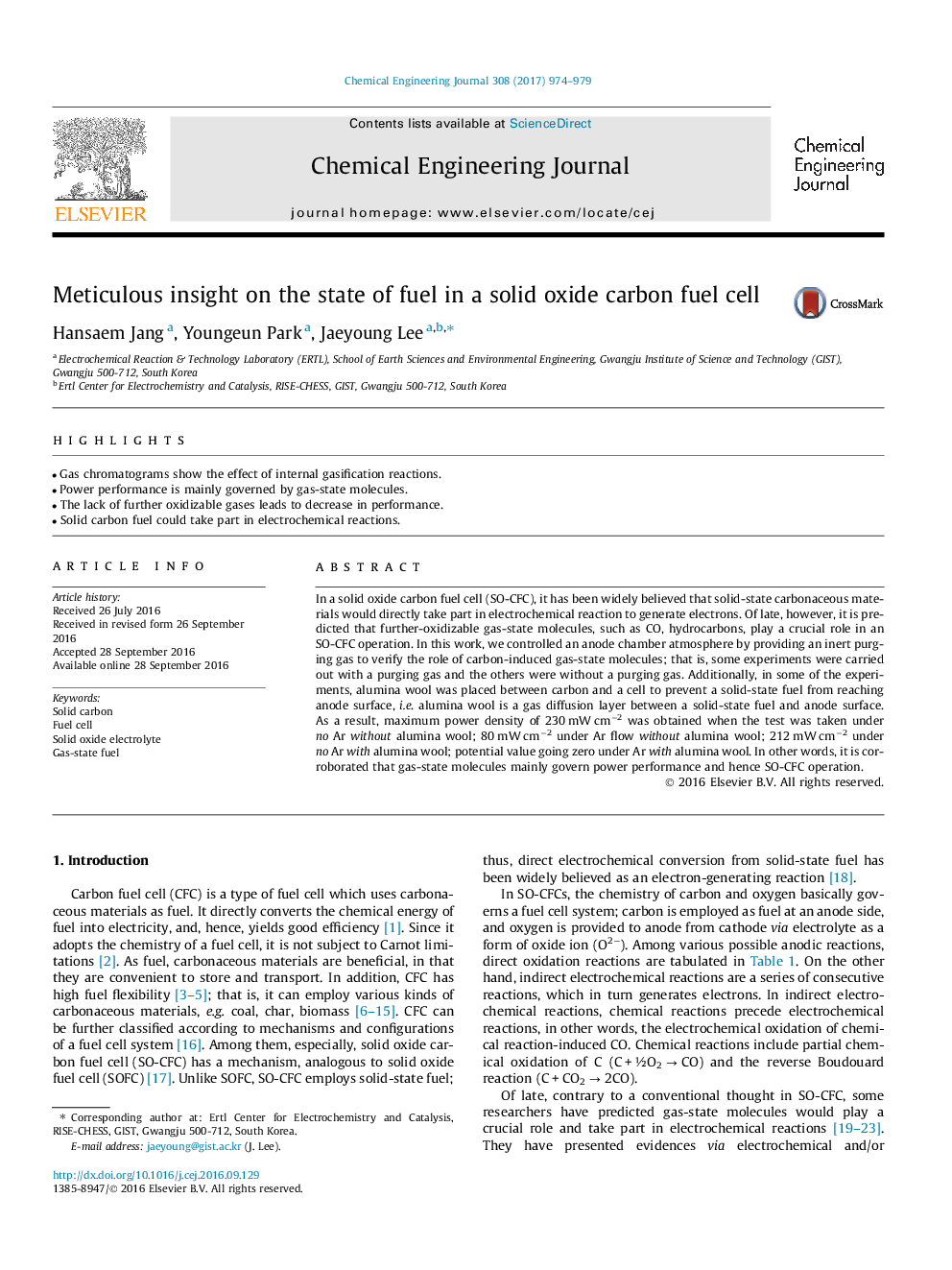| Article ID | Journal | Published Year | Pages | File Type |
|---|---|---|---|---|
| 4763769 | Chemical Engineering Journal | 2017 | 6 Pages |
Abstract
In a solid oxide carbon fuel cell (SO-CFC), it has been widely believed that solid-state carbonaceous materials would directly take part in electrochemical reaction to generate electrons. Of late, however, it is predicted that further-oxidizable gas-state molecules, such as CO, hydrocarbons, play a crucial role in an SO-CFC operation. In this work, we controlled an anode chamber atmosphere by providing an inert purging gas to verify the role of carbon-induced gas-state molecules; that is, some experiments were carried out with a purging gas and the others were without a purging gas. Additionally, in some of the experiments, alumina wool was placed between carbon and a cell to prevent a solid-state fuel from reaching anode surface, i.e. alumina wool is a gas diffusion layer between a solid-state fuel and anode surface. As a result, maximum power density of 230Â mWÂ cmâ2 was obtained when the test was taken under no Ar without alumina wool; 80Â mWÂ cmâ2 under Ar flow without alumina wool; 212Â mWÂ cmâ2 under no Ar with alumina wool; potential value going zero under Ar with alumina wool. In other words, it is corroborated that gas-state molecules mainly govern power performance and hence SO-CFC operation.
Related Topics
Physical Sciences and Engineering
Chemical Engineering
Chemical Engineering (General)
Authors
Hansaem Jang, Youngeun Park, Jaeyoung Lee,
